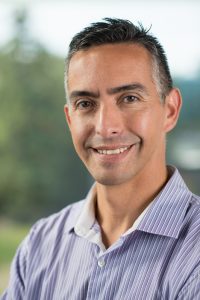December 2020 Member Spotlight

Richard Arias-Hernandez MSc PhD iSchool (Library, Archival and Information Studies) The University of British Columbia
What attracted you to information science as a profession and field of study?
My first incursion into information science was due to my curiosity for information technologies and electronics growing up. I loved building computers from parts, playing with integrated circuit boards, and programming them to create applications and games. Later on, with a computer sciences degree on my shoulders, I got more interested into the reasons why some information technologies were not successful or used by the individuals who were supposed to benefit from these designs. That took me to delve deeper into organizational theories, psychology, philosophy, and sociology of information and information technologies, which I explored further in my graduate studies. Along the way, I discovered that I also enjoyed researching and teaching on the subject.
In what area of information science do you practice, teach or do research? What about that area of practice/study made you choose it?
Due to my background in computer science and science & technology studies (STS), I teach and research in courses where I can explore information practices and technologies as socio-technical phenomena, such as: Digital Libraries and Archives, Digital Collections, Information Practices, Information Visualization, Database Design, STS perspectives on IT Design for Libraries and Archives, etc. Courses that allow me and my students to critically engage with technology design and strengthen our sociological imagination of technology skills get my attention. I also like to partner with practitioners and communities to extend classroom learning outside of the university and to tackle on real and concrete socio-technical designs that benefit students and other communities.
Why did you join ASIS&T?
It is a great professional association to network with great colleagues in the field of information science and library science. There are also several folks from STS that intersect their work with LIS research and I get to meet them at ASIS&T annual meetings and events. I also like to be involved with committees in which you can get a quick and really good view about the state of the field in research and teaching and where it is going, and ASIS&T provides great opportunities for that.
What advice would you give to young people contemplating information science as a potential profession or field of study?
To volunteer or work with information organizations or with communities in need of satisfying information needs alongside with practitioners. I have always found that close contact with the people you want to serve in your profession, and with practitioners that walk the talk, clarifies for "newbies" (not only young people contemplate entering into the profession) whether this is the right profession for them. It also provides for an excellent source of pragmatic research questions that may motivate more that one future Ph.D. or LIS scholar.
What do you think will be the biggest challenge for those working in information science in the next decade?
Responding with appropriate theories, technologies, practices, policies and institutional changes to sociotechnical change to stay relevant. Now, our attention goes to refugee crises, climate change, an aging society, or fake news. In 10 years, something else may become a pressing socio-technical issue as well. We need to continue addressing the informational aspects that contribute to the creation and solution of these problems.
As a member of ASIS&T; what do you forward to participating in the most?
I look forward to contributing to ASIS&T meetings and event with my teaching and research, contributing with leadership in future events on committee work, and overall, growing as a member of this caring community of LIS scholars and practitioners
